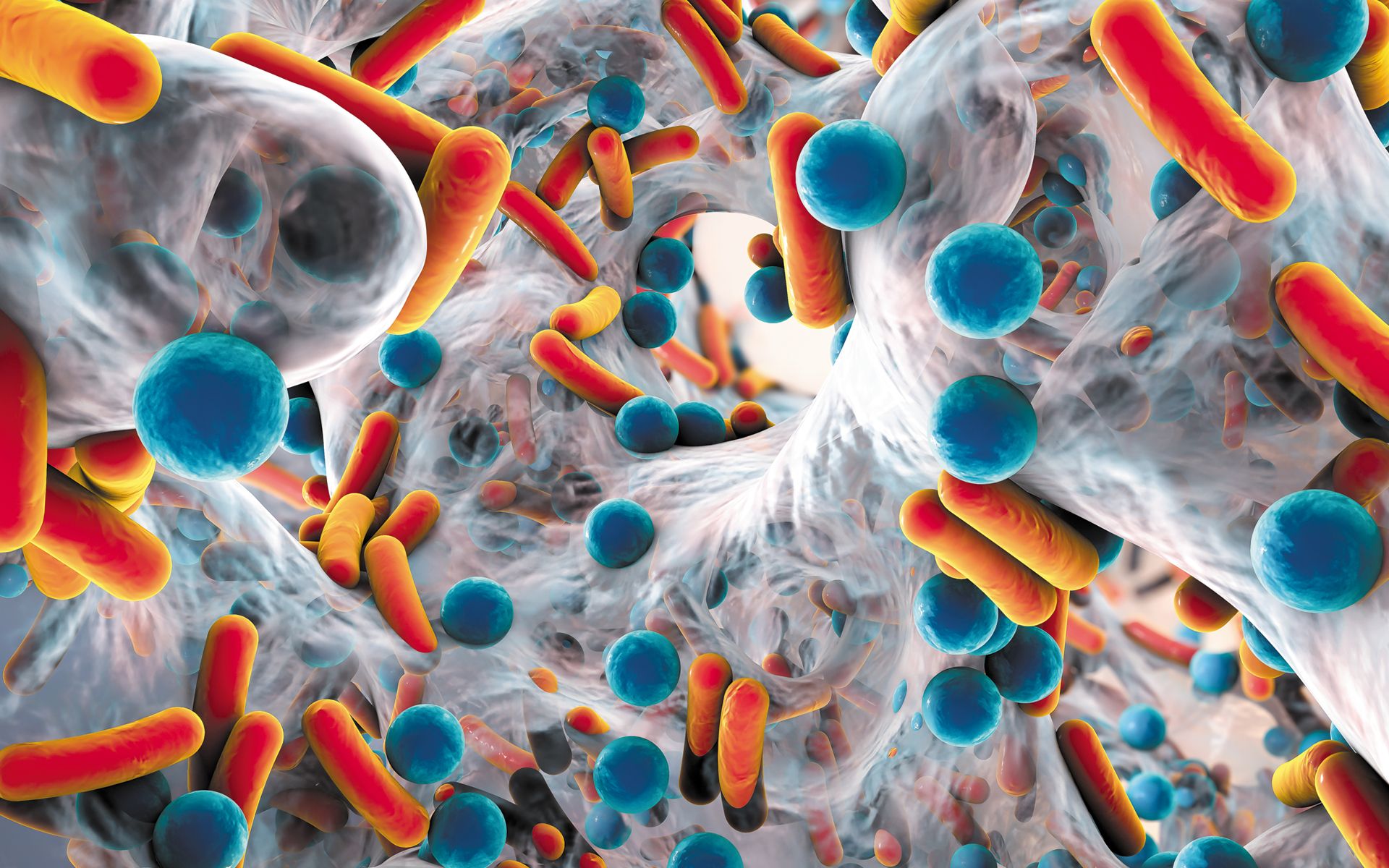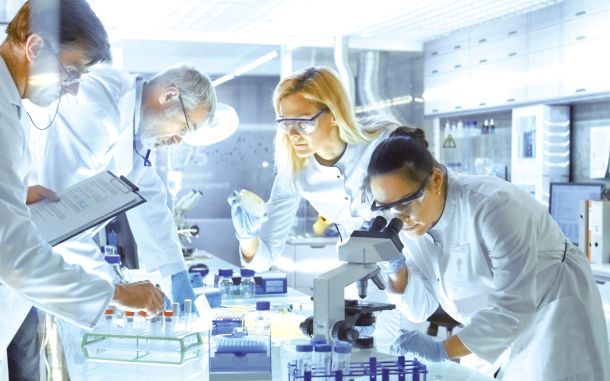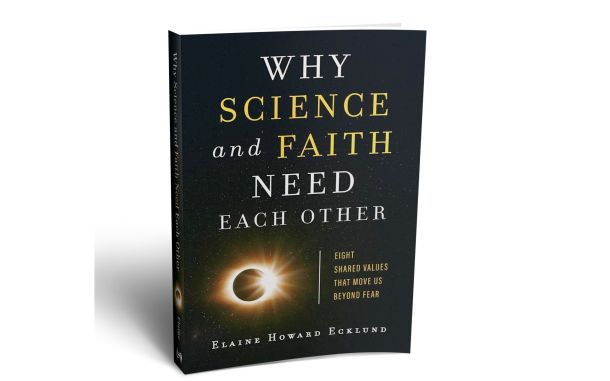Healing with Spices

In This Article
-
For generations, spices have been used to treat disorders.
-
Many spices act as natural antimicrobial agents with high anti-biofilm properties.
-
The preventive or healing effects varies according to the course of a disease, as well as how spices are used.
Spices, generally used for seasoning foods, can also be used for killing microbes. As people opt for foods that are less processed—and may even contain no chemical additives—the protective value of spices has increased. In addition, the use of spices in foods has become more prevalent thanks to research into the various benefits of spices.
For generations, spices have been used to treat disorders. Scientific research indicates that the majority of spices have medicinal properties that either relieve the symptoms of illnesses or prevent their onset. One such property is related with how spices are effective against formation of biofilms.
Spices fighting biofilms
A biofilm is a micro-ecosystem created for various microbial species that protects them from environmental factors, allowing them to stay in a propitious environment [1]. Biofilms are silent aggregates of microorganisms, in which microbes are embedded in an extracellular polymeric substance. They therefore exhibit high rates of resistance to antibiotics and antimicrobial substances. Almost all species of microorganisms appear to form clusters of biofilms, on both biological and non-biological surfaces. With the increase in the incidence of biofilm-implicated infections, research into the control and prevention of biofilm formation has also gained momentum. Some types of bacteria that may develop into biofilms include Pseudomonas, Enterobacter, Flavobacterium, Alcaligenes, Staphylococcus, and Bacillus. Biofilm formation occurs in three stages: attachment of bacteria to a surface, colonization through reproduction on the surface, and developing irreversible exopolysaccharide matrices [2].
Because biofilm formation might be induced by some antibiotics, many researchers have begun investigating the antimicrobial and anti-biofilm properties of various natural substances.
The efficacy of commonly used spices to prevent biofilm formation is of great significance. Many spices act as natural antimicrobial agents with high anti-biofilm properties. Studies have shown that ginger, curcumin, cinnamon, and black pepper, which are widely used especially in many Asian countries, have antimicrobial and anti-biofilm properties [3]. The interaction among some of the spices, which causes deformations in biofilm formations, is also important. As the interaction between the spices increases, their capacity to isolate biofilm formation also increases. Certain spices isolate microorganisms by preventing them from being attached to a surface or to each other [4].
Along with its anti-inflammatory (preventing inflammation), antioxidant (slowing the reaction of oils with oxygen), anti-angiogenesis (inhibiting the formation of new vessels so that a tumor does not spread), anti-atherosclerosis, and cancer-preventing properties, ginger also has antimicrobial properties. Thus, its use in the treatment of bacterial infections has become widespread. It’s also been determined to be a digestive stimulant [5].
Turmeric, especially its main component curcumin, has a wide range of pharmacological properties, including anti-microbial, anti-diabetic, anti-inflammatory, antioxidant, and anticarcinogenic (preventing cancer) ones. It can prevent certain bacteria from forming biofilm. Curcumin is known to reduce the occurrence of such diseases as multiple sclerosis (MS), Alzheimer's disease, and Parkinson's disease [6].
Cinnamon, another medicinal herb, is commonly used in cosmetics as well as in food products. According to traditional Chinese medicine, cinnamon has been used as a healing agent in case of nerve injury. A 2004 clinical study found that cinnamon can be an effective diabetes treatment: it reduced the rate of fasting blood sugar by 18-30% [7]. Although no definite conclusions have been reached regarding the effect of cinnamon as an anti-diabetic treatment, it has been found to have the potential to lower postprandial blood sugar levels [8]. With its antimicrobial properties, cinnamon acts as an antibacterial agent and is used against inflammation. In addition, it is known to have beneficial effects on oral health. It has been used to treat toothaches, oral infections, and bad breath [9].
Black pepper is another spice widely used in folk medicine. Piperine, an important alkaloid component in black pepper, exhibits a preventive effect for some types of cancers, particularly breast, prostate and colon cancers [10]. It was found that piperine inhibits some of the proteins produced by tumor cells by interfering with their signaling mechanisms, thereby reducing tumor progression [11]. In studies regarding the use of black pepper, particularly its essential oils, to treat Type-2 diabetes, it was observed that it inhibits the two enzymes that convert starch into glucose. It thereby helps manage blood sugar and delays glucose absorption [12].
Experts investigating the worldwide incidence rates of cancer determined that Indians are five times less likely to get breast cancer, eight times less likely to get lung cancer, nine times less likely to get colon cancer, and fifty times less likely to get prostate cancer than Americans. These rates are remarkable considering the fact that Indian people are exposed to more carcinogens due to their environmental and living conditions. It has been estimated that the difference in the rates stems from the common use of spices by Indians. Thus, new research investigating the topic have been launched [13].
Spices are more effective when used together. For instance, the intake of curcumin in turmeric together with the piperine in black pepper increases the absorption of curcumin twenty-fold [14]. Knowing when to use them to increase their absorption—such as with fatty foods, or hot and cool foods—also enhances their effects [15].
The preventive or healing effects varies according to the course of a disease, as well as how spices are used. It should be borne in mind that spices can also have some side effects. Some include: indigestion problems for people with ulcers (caused by the ingestion of excess black pepper) [16]; excessive bleeding due to the salicylates in ginger (the same blood thinner used in aspirin) [17]; nausea and gastrointestinal complaints due to the consumption of excess curcumin [18].
Relationship between nutrition and healing
Nutrition and healing are interrelated in many aspects according to the causal laws we observe in creation. Life is being created by God “without veil,” i.e., without His need for any causal factor. Similarly, although there are causal intermediaries we use for healing, still for believers it is He who is the source of ultimate healing (All-Healing). Just as we seek to be cured with spices in nature He created, we pray to Our Lord to be the recipient of the meaningful, wise manifestations of His name, All-Healing. Spices are an example of the infinite blessings bestowed by our All-Munificent Lord.
Notes
- Jamal, M. et al. (2015). Bacterial biofilm: its composition, formation and role in human infections. RRJMB, 4(3), 1–15.
- earsiv.hitit.edu.tr/xmlui/bitstream/handle/11491/5393/merve-bicer2018.pdf?sequence=1&isAllowed=y
- Kaplan, J. B. (2011). Antibiotic-induced biofilm formation. The International Journal of Artificial Organs, 34(9),
- Mah, T. et al. (2001). Mechanisms of biofilm resistance to antimicrobial agents. Trends in Microbiology, 9(1), 34–39.
- Jahid, I. K., S. D. Ha (2012). A review of microbial biofilms of produce: future challenge to food safety. Food Science and Biotechnology, 21(2), 299–316.
- Chainani-Wu, N. (2003). Safety and anti-inflammatory activity of curcumin: a component of turmeric (Curcuma longa). The Journal of Alternative & Complementary Medicine, 9(1), 161–168.
- www.eczaakademi.org/images/upld2/ecza_akademi/makale/20110325013735diyabet_tedav_kul_bitk_urunler.pdf
- Kirkham, S. et al. The potential of cinnamon to reduce blood glucose levels in patients with type 2 diabetes and insulin resistance, Diabetes Obes Metab. 2009 Dec; 11(12):1100–1113.
- Rao, P. V. et al. (2014). Cinnamon: a multifaceted medicinal plant. Evidence-Based Complementary and Alternative Medicine, 2014.
- Gould I.M., A.M. Bal. New antibiotic agents in the pipeline and how they can overcome microbial resistance. Virulence. 2013;4(2):185–191.
- Arun Kumar Srivastava, Vinay Kumar Singh Malacology Laboratory, Department of Zoology Biological action of Piper nigrum the king of spices, DDU Gorakhpur University. 2017.
- Oboh, G. et al. (2013). Antioxidative properties and inhibition of key enzymes relevant to type-2 diabetes and hypertension by essential oils from black pepper. Advances in Pharmacological Sciences, 2013.
- Shan, B. et al. (2007). The in vitro antibacterial activity of dietary spice and medicinal herb extracts. International Journal of Food Microbiology, 117(1), 112–119.
- Singh, G. et al. (2002). Chemical and biocidal investigations on essential oils of some Indian Curcuma species. Progress in Crystal Growth and Characterization of Materials, 45(1-2), 75–81.
- Cui, H. et al. (2016). Liposome containing cinnamon oil with antibacterial activity against methicillin-resistant Staphylococcus aureus biofilm. Biofouling, 32(2), 215–225.
- www.diabetesselfmanagement.com/blog/spice-it-up-boosting-your-health-with-spices-and-herbs-part-5
- www.healthline.com/health/food-nutrition/ginger-tea-side-effects#benefits
- examine.com/supplements/curcumin/








